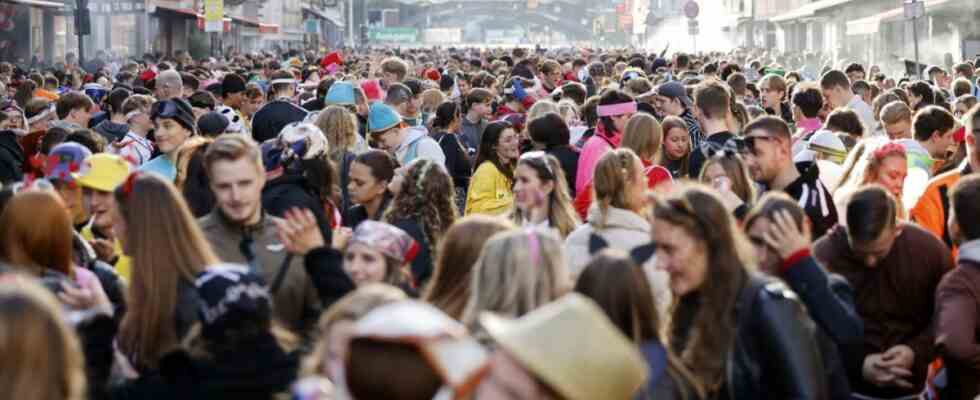Twice a year, Cologne has a problem that other cities would like to have: the metropolis on the Rhine is too popular. Every 11.11. Hours before 11.11 a.m. and on every “Wieverfastelovend” (Women’s Carnival), tens of thousands of mostly young, drinking people set off for the student district. To celebrate carnival there, in the so-called Kwartier Latäng.
Or at least what they think of as carnival. Ur-Kölner and old-Jecken may look at the scenes (and some of their own children) with disgust, it doesn’t help: This Thursday, too, teenagers will stagger through Zülpicher Straße again in the morning, in the bushes on the university meadows vomit or stand in doorways when peeing wildly. By noon at the latest, the precautionary fenced Veedel will probably be cordoned off by security guards and the police – because all the bars and streets are overcrowded.
Residents, innkeepers and city politicians all agree that things cannot go on like this. But how then? The city administration didn’t come up with anything really new this time: In order to keep the crowds who can no longer get into the barred Kwartier Latäng happy, an alternative area was created in the nearby green belt. Again. Diversion by diversion, Cologne has been pursuing this idea for years – and now more resolutely than ever: If necessary, up to 50,000 people should be entertained on the university lawns, with DJs, towering boxes, beer stands and pretzel stalls. But because this green belt is actually a landscape protection area, the city is adding 500,000 euros – and greyish plastic plates on the lawn.
The town hall will sponsor an “uninhibited youth drinking festival,” says a host spokesman
Criticism immediately hailed. It’s “messy chaos,” says Markus Vogt, spokesman for most of the inns in Kwartier Latäng, complaining that the town hall is becoming a sponsor of an “uninhibited youth drinking festival.” Civic association and district representatives reject the alternative party. Above all, they fear that the city’s strategy will ultimately only attract more visitors. “The word gets around among young people,” believes Markus Vogt. “Next time there will be more.”
City manager Blome considers this view “a reversal of cause and effect”. According to Blome, the Kwartier Latäng is “regarded among young people as the place to be“What is threatening if the city doesn’t provide an alternative area, we experienced three months ago, on November 11th, 2022: young people tore down barriers, climbed over fences and even over a busy railway embankment to celebrate in the Zülpicher district. Which is why Blome adds : Disco, food and drink in the green belt is “not an event – this is a measure to avert danger”.
It may be that things will go well this time – “hopefully,” says innkeeper Vogt. “But the city can’t get rid of the ghosts that it calls itself.” In nine months at the latest, on the next November 11th, the crowd will be even denser. In fact, nowhere in Germany is the beginning of the session celebrated as excessively as in Cologne; then even buses from Belgium and the Netherlands roll in front of the Kwartier Latäng. Vogt demands that the burden of the young revelers be distributed more fairly across the city. Otherwise he wants to close his two pubs in November. And flee.

